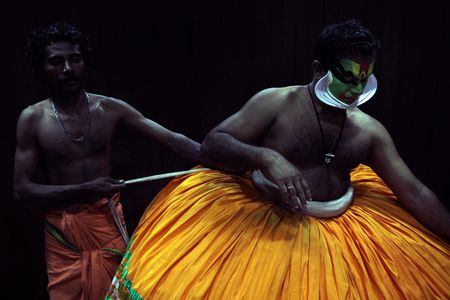What is it Like to be a…Travel Photographer
Even in the midst of a recession, talented photographers can find a way to make a living doing what they love. And it’s not all weddings and senior portraits. In this series, editorial intern Carolina Hidalgo talks to several professional photographers about how they landed their dream jobs. This Week: Travel Photography. (Last Week: Event Photography)Tewfic El-Sawy, an international banker-turned-photographer, specializes in documenting cultures and traditions from around the world.

Even in the midst of a recession, talented photographers can find a way to make a living doing what they love. And it’s not all weddings and senior portraits. In this series, editorial intern Carolina Hidalgo talks to several professional photographers about how they landed their dream jobs. This Week: Travel Photography. (Last Week: Event Photography)
Tewfic El-Sawy, an international banker-turned-photographer, specializes in documenting cultures and traditions from around the world. He leads two-week travel photography tours throughout the year, with a focus on Asia, Latin America and Africa, and showcases his work on his blog, The Travel Photographer, and website, TesImages.com.
El-Sawy makes his living from leading the travel expeditions, on which he’s accompanied by photographers who are invited or referred by past participants, and from getting published in magazines, such as Outdoor Photography and Digital Photographer.
How and when did you become interested in photography?
About 12 years ago. In my previous career I was international banker and I traveled a lot with the bank that I was working for and always took a small camera with me and basically snapped what I saw on my trips. When I essentially switched careers I decided that travel photography was the right fit for me.
How did you get started professionally?
I was at a workshop in Morocco with a lot of other photographers that were also, for a lack of a better word, amateurs. And through conversations I decided that I would try my luck at arranging photo trips simply because I love travel and photography and I’m good at organizing things. So that was the concept and I sort of put together a trip. My first tour was three countries in one trip, which is madness, but I did it because of lack of expertise. And I invited the photographers that I met at that workshop.
That’s how my entry into professional photography started. It was through the photo tours. Then I said, well I’ve got to raise the level of my game. I began reading more, training more, and that’s how I became more of a professional photographer. I’m not really comfortable with the definition of professional photographer — I would say working photographer would be better.
**
How do you choose your gear?**
When I started off, I had a choice between the two biggest — Canon and Nikon. And I sort of went for Canon. It was nothing more than just a choice; it was at that time a non-educated choice. So Canon was the choice for me and because I have invested so much into lenses and paraphernalia, I don’t change gear much. So in other words, the lenses that I bought seven, eight, nine years ago, I still have. I only add to them. What changes really is the camera only because they come out with better models every year. As for other gear — I do audio recordings — I look for what is recommended on the web.
On a typical trip, I carry a Canon 5D Mark II, a Canon 1D Mark II, a 70-200mm f/2.8, a 24mm f/1.4, a 28-70mm f/2.8 and a 17-40mm f/4.0. For audio, I use a Marantz PMD620.
**
What is the most interesting place your photography has taken you?**
It will always be India. I always say that anybody can take an excellent picture in India. It’s because of colors, because people are so photogenic and willing to be photographed and the light there is magnificent. The colors and the smells and the tastes and the sounds. I go there almost twice a year — on my own and leading a crew. The beauty of India — I compare it to an onion without the smell or the taste. It has so many layers. I’m still on the outer layer. I still have to peel the first layer and the second layer — it’s inexhaustible. Whether it’s because of rituals, the different religions, the sects — their whole culture is so unbelievably rich. Maybe I haven’t gotten to the second layer.
**
What advice would you give to aspiring travel photographers?**
I think the industry is a very difficult one, whether it is the photo industry as a whole and certainly the travel photo industry is one of the most difficult to enter and penetrate and make one’s career and livelihood from. But if travel photography is their passion then they have to follow it no matter what, and that’s from an abstract standpoint. But from a practical standpoint they have to find a parallel way of earning their livelihood. And if it’s only photography that they’re interested in then they have to do wedding photography, documentary photography, anything that can sustain their passion for travel photography. Or do some type of other career. This is what I tell my students and whoever wants to hear my advice. Find an additional source of income whether it is in photography or elsewhere.